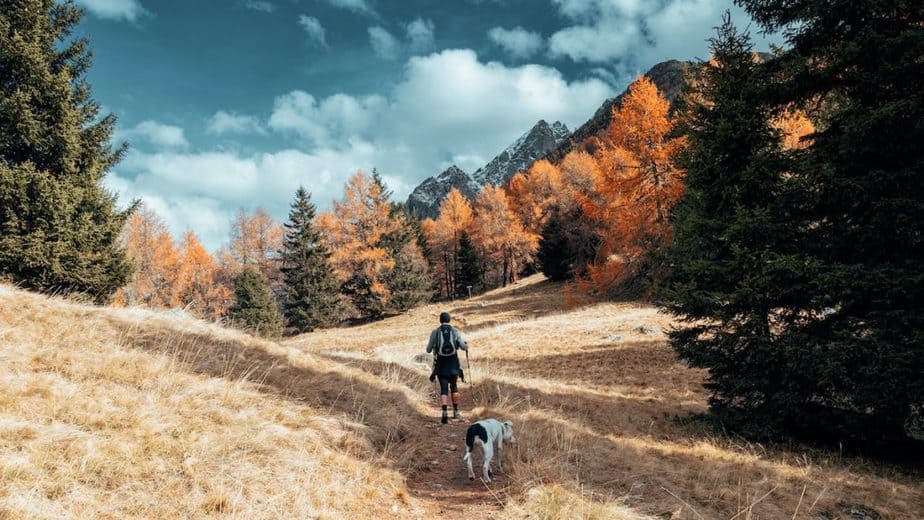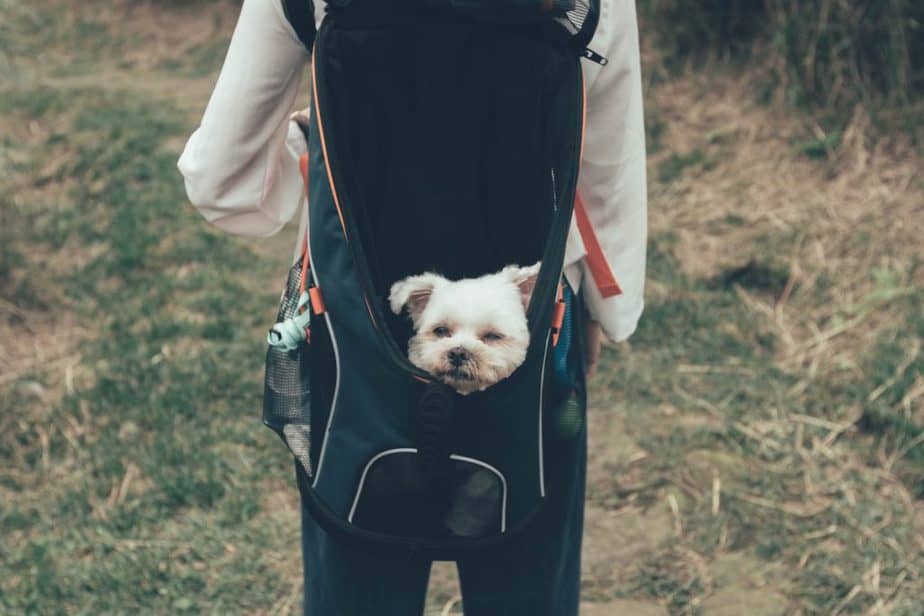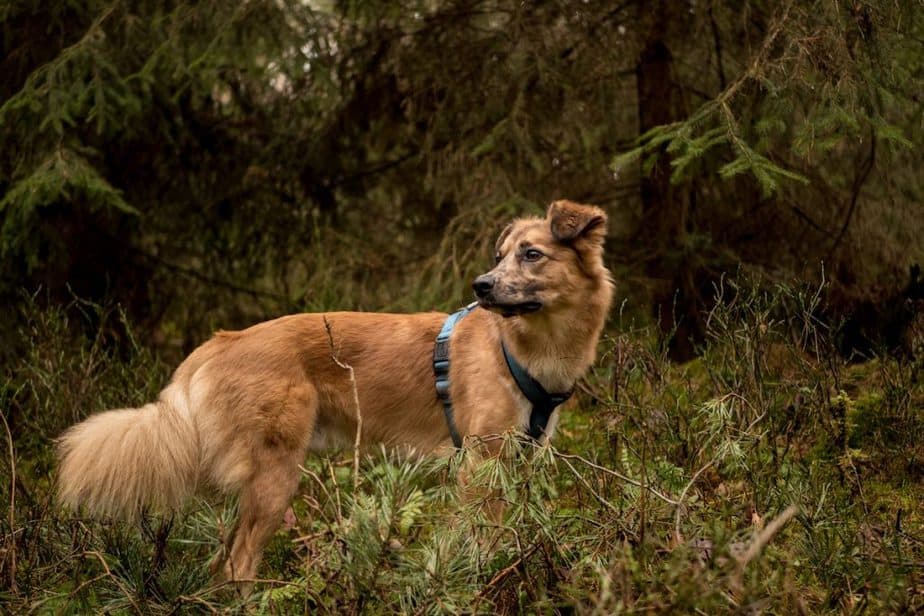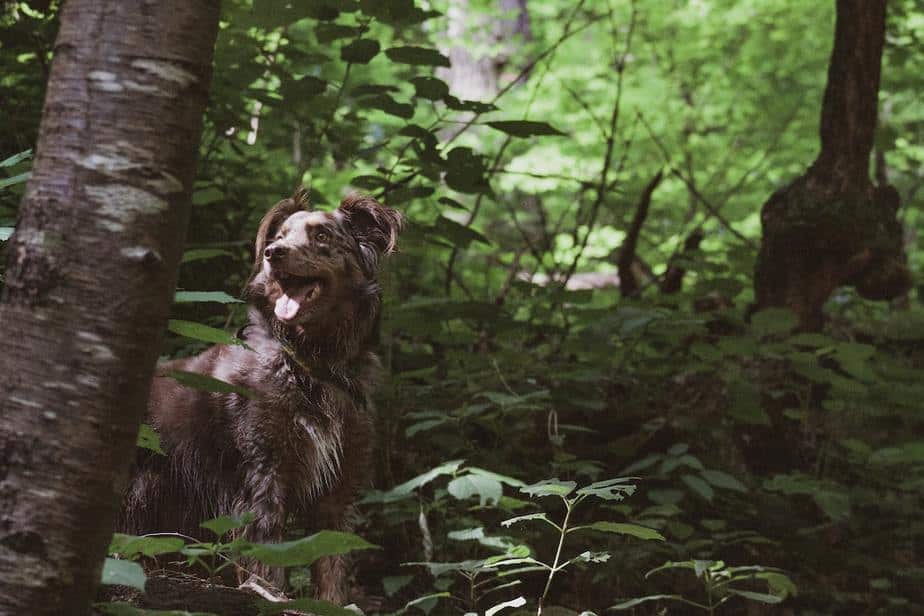Taking your dog along shouldn’t bog you down with extra gear, but you will need to consider where you are going and how long you plan to hike in order to ensure you have what you need for a safe trip. Whether hiking for an afternoon or taking an overnight trek, you should make sure to stock your backpack with the following items to help Fido, Lassie or whomever you take with you have as much fun as you do.
Adequate Water for Both You and Your Dog
If you know that there will be water sources along the route, carry a water bottle with you that you can refill if needed. If you are unsure about water availability, pack 1-2 quarts of water for your dog for a day hike plus enough for yourself. Collapsible dog bowls are good for dogs that may not drink from a stream or from a water bottle.
A leash
Most trails require dogs to be on a leash at all times.
Proper ID tags for your pet
The dog tags should include information on your pet’s vaccination as well as your home address and phone number. Make sure the rabies tag that you received from your veterinarian is attached to your dog’s collar.
What to Take With You on a Hike

Most pet injuries while hiking occur on the pads of their feet. The pads can easily be cut on sticks, stones and roots in the ground. You should stop hiking intermittently to check your dogs paw pads for cuts or blisters. Have the appropriate bandages and disinfectants with you in case this happens.
Clean-Up Items
Be sure to pick up all your dog’s feces while hiking using paper towels or your bag and dispose of it in a garbage container. Also carry a towel to clean off your dog should he or she get into dirt or water.
Snacks or Treats
Your dog will get tired. Make sure to pack a few treats to keep him energized. Don’t overfeed your dog while hiking or they may get sick. Treats can also be helpful in getting your dog’s attention.
Make Sure Your Dog Is Up to the Challenge
Make sure they are healthy and well nourished before setting out on the hike. Older dogs need a trail with level terrain and very low incline. Small dogs should not be on trails with lots of low-hanging brush or leaves. Pay attention to the signs your dog may give while on a hike that there is something wrong. If they avoid the sunshine or lay underneath leaves, they may be dehydrated and need to stop for a long drink of water. If their stride becomes labored or if they favor one paw over another, stop and do a health check. Your dog will tell you what they need while outdoors so long as you listen.
Some dogs love to get out in the woods and are off chasing anything that they can smell. Taking your dogs on hikes through the woods is an extremely enjoyable activity for dogs and owners alike. However, some owners are a bit oblivious to the hazards that can await a dog in the forest, and really put their dog in unnecessary danger. One of the first steps of preparing for a dog hike should be to ask yourself some simple questions relating to your particular dog.
Dog Backpacks

Your dog’s size and health are important. If you have a toy breed, they are going to have smaller legs, and not be able to walk as far, and as fast, as a larger dog. Don’t subject a dog to miles of walking. They most likely won’t be able to handle the journey. You can always pick the dog up, if they are small enough. However, if it’s hot, being stuck next to you like this could give your dog heat exhaustion.
If you have a large dog, they should be able to handle just about any reasonable hike you can handle. Dogs are just as out of shape as their owners. Make sure your dog has the stamina required for this walk. Make sure that you are not hiking with your dog in extreme heat or cold. A long-haired dog can get overheated very quickly.
Running in temperatures above 70 degrees is dangerous for long-haired breeds. Some dogs will run themselves silly until they are about to pass out. If you own a dog like that, make sure you take a break once in a while, even if they don’t seem tired.
- You want to make sure their nails are properly trimmed. Long dog nails can cause extreme pain to any dog, and will cause the dog not to want to walk.
- Make sure that your dog is properly licensed and that they are allowed to come along.
Always Keep Your Dog on a Leash
Some state parks and forests have very strict leash laws for non-hunting dogs. If you live in an area with wildlife, do not let your dog too far ahead of you. Coyotes, wolves, grizzlies and moose can cause some real damage. In desert terrain, poisonous snakes, scorpions, and spiders are real threats. If you have a hunting dog, they could end up sniffing up to the wrong critters. Keep your dog on a leash in places with dangerous wildlife.
Keeping your dog on a long leash is probably the best course of action no matter where you happen to live. And, of course, you always want to bring sufficient water for your dog. Don’t just try to give them water out of your water bottle; they need lots of water from a bowl.
First Aid Kit for Your Dog

Knowing first aid can save the life of your dog. Just like people, dogs have accidents and need medical attention sometimes. And sometimes there’s just no time to get to the vet. That is when doggie first aid is so handy to know. You need a solid first aid kit for your pooch. If you do a lot of hiking, then you should also have a kit in your car for emergencies out of the home. Most of the items in your doggie first aid kit are similar to those you have in your regular one for the family. There are, however, some things that need to be specialized for the animal of your life. Here are some of the basics that your first aid kit cannot do without:
- Hydrogen peroxide
- Sterile eyewash solution made specifically for pets
- Roll of absorbent cotton
- Some cotton balls
- Clean, white cotton sock (to cover wounded paws)
- Gauze pads
- Tape
- Small scissors with rounded tips
- Tweezers
- Instant ice pack
- Bulb syringe for suctioning mucous from mouth or nose
- Injection syringe without the needle (to give liquid medication)
- Small flashlight
All of these things should fit neatly into a container that has a nice tight lid. This will help to keep everything clean and sterile no matter how long it is sitting on the shelf or in the car. It is also a good idea to keep your vet’s name and number on the lid. You may want to put the number of the local emergency animal hospital. You know, just in case something happens when the regular vets are all closed.
Bee stings are one of the most common injuries
- It is important that you get the stinger out right away or you risk an infection.
- It also helps minimize any pain for your dog.
- If you have to, restrain your dog and then use the tweezers in the first aid kit to pull out the stinger.
- You can then wash the area with some lukewarm water and baking soda.
- This can help to take some of the nasty stinging away and ease the pain.
- Ice and Benadryl will also help to keep the pain and swelling to a minimum. Make sure to check with your vet just to make sure how much Benadryl is enough for your dog. It is important that dogs get the right dosage when they take medications.
Never Rush an Injured Animal
Do not run over to your dog in case of injury. This may spook them. Scared pets are harder to catch and take care of. Take your time and let the animal know that you want to help, not harm.





1 thought on “Taking your Dog on a Hike With the Right Hiking Gear”
Another great addition to the first aid kit is Coban. It stick to itself and protects a lot better than gauze roll. One other thing is a pair of wire cutter pliers if you are in an area with porcupines. They can help if you or your dog gets quills satuxk in the skin.